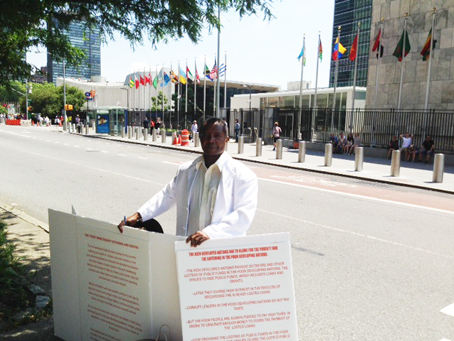Share this
Without pomp or circumstance, the ride-sharing service Uber launched here in Nairobi, Kenya, on Wednesday afternoon.
The company had been looking at this market for more than a year before setting up shop, local tech investors said. Uber declined to comment on the length of its planning process, saying only that it deployed its regional manager here in late 2014.
The manager, Alastair Curtis, set up Uber’s Lagos, Nigeria, operation before launching the service in Nairobi. He said Uber’s first 24 hours in Nairobi had gone well, and that Kenyan drivers seemed to be more “in tune with customer service than in Nigeria.” Rates for Nairobi are set out on an Uber blog.
Curtis wouldn’t give a specific count of the drivers Uber has deployed in Nairobi, but he said the number would grow as demand picks up. The company’s Twitter TWTR +3.28% account here, @uber_kenya, had 841 followers at the time this was written, some 30 hours after launch.
Your correspondent called her first Uber in Nairobi on Thursday, to go to a lunch about 10 minutes’ drive from home.
quick review:
The app said the driver would be seven minutes. He arrived 25 minutes later. Based on observation of the map while waiting for him, he was stuck in traffic for about 15 minutes and spent 10 minutes more driving around the pickup address without finding it. Much of this post was written waiting for him.
The driver didn’t know where the destination—a popular hotel—was. Even after your correspondent put the address in the destination field on the app, he still needed directions.
He also didn’t seem very familiar with using the app from the driver end: Your correspondent had to remind him to tap to start the ride after pickup and to tap again to end the ride so it could be paid.
That being said, he was very polite and the car was in top shape, air-conditioned and clean. The cost of the ride was 250 Kenyan shillings ($2.70), paid over the registered credit card. There’s a 20% discount on rides for the first two weeks after the launch. There were no other payment options, such as M-Pesa, the popular mobile money-transfer service.
Your correspondent rated the driver and gave quick feedback in the comments box. A few hours later, an Uber employee in New York followed up on the comments over email and requested additional information, promising to relay the feedback to the driver.
To go back home, your correspondent got a taxi from the hotel rank, where the vehicles tend to be better but more expensive than the average taxi on the road. The car was clean and in good shape. The driver knew exactly how to get to the destination. He accepted M-Pesa payment and provided a receipt. The downside of the short, sweet ride was a Backstreet Boys song blasting from the stereo. The trip cost 600 shillings, more than twice what the Uber ran.
Nairobi’s market for transportation screams for an Uber-like service; indeed, in the year that it took the real thing to launch here, a number of clones surfaced.
Kenya’s buzzing capital, population roughly 3.3 million, is growing rapidly and haphazardly. It is constantly brought to a standstill because of its notorious traffic. Your correspondent almost missed a flight recently, despite having left four hours ahead of departure to travel the 10-kilometer (6.2-mile) distance between home and the Jomo Kenyatta International Airport.
Traffic aside, driving here can be traumatic. Traffic lights are little respected, big avenues are poorly lit, drunk driving is common and massive trucks are frequently seen speeding precariously along key urban arteries. Just last week, again driving to the airport, your correspondent got stuck on the main road for about half an hour. The “obstacle” that had created the bottleneck on one of Kenya’s most important roads: the body of a man, who had been killed by a driver while crossing the poorly lighted avenue on foot. He wasn’t removed for at least one hour.
All this makes driving here an often unpleasant, or worse, experience. And, while taxis abound, their drivers’ skill, familiarity with the map and safety credentials are far from guaranteed. The ubiquitous matatus, vans that transfer about a dozen or more passengers for a very small fee, are driven by daredevils who will do anything to get to their destination a few seconds faster.
All in all, if you get a good driver in Nairobi, you stick with him. Will it be an Uber driver? “We’re here to give you choices,” Curtis said
-WSJ





















